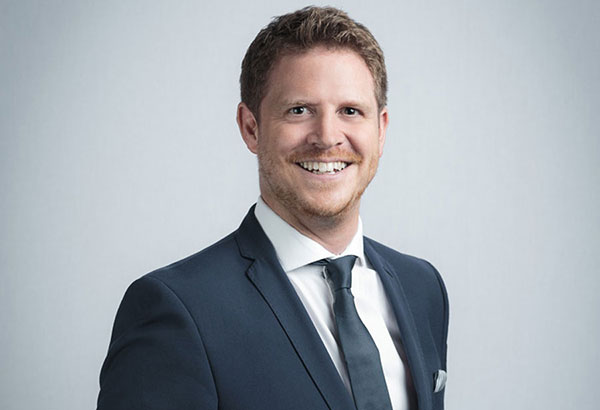How Disney is unleashing the power of the force in Southeast Asia

Tom Batchelor, Disney’s general manager of Studio Entertainment for Southeast Asia
You’d think most people on Earth have heard about Princess Leia, Han Solo, Luke and Chewie by now. But not so, and not enough for Disney, which now owns Lucasfilms Ltd. and the entire Star Wars canon (the latest chapter, Star Wars: The Last Jedi, was launched here on Dec. 13).
According to Tom Batchelor, general manager of Studio Entertainment for The Walt Disney Company Southeast Asia, “For many (Western) fans, they’ve been part of the Star Wars fan base since 1977. But especially in Southeast Asia, it really is generally a 21st-century phenomenon.”
This echoes what Disney CEO Bob Iger said at D23 when The Force Awakens was about to be released. It still felt like an expensive gamble for Disney then, but Iger was confident enough to call this “a new century of Star Wars.” And with the franchise expanding to in-between movie installments (Rogue One, Han Solo), and more Star Wars gaming, merchandise and fashion content being devised to maximize the “lull” between releases, you see what he means. That and the fact that The Force Awakens ultimately generated an extra $330 million from Asian audiences alone, and that confidence seems well-placed.
But Asia still has a long way to go in embracing The Force. “With the exception of Japan,” Batchelor says, “Star Wars is really in its early stages of awareness in Asia, especially when you compare it to Europe or the US. What’s wonderful about this part of the world for this franchise is the potential for discovery, expansion and growth is very strong.”
The approach to expanding Star Wars awareness here has basically two components. One is retail: merchandising and promos that are tailored to local markets and tastes, with a special focus on the rising interest in Star Wars-themed fashion. Batchelor notes “It’s an iconic, wearable brand” and mentions “working closely with strong local brands and partners like SM,” as well as promos with telecom providers like Globe. “That really allows us to elevate the Star Wars franchise very specifically in a very clever way in the local markets,” he says, mentioning another region-wide marketing campaign by Grab taxi, where users download phone apps featuring Star Wars spaceships navigating local traffic and earn points.
“That one is nice because it’s so visible and present, and it’s about being part of daily lives in the Philippines.” The key is to “build that excitement and ride that wave of excitement across the region,” leading up to the final movie release.
The second component is social media, and Batchelor says this now focuses on key opinion leaders (KOLs) whose vlogs and YouTube pages generate not just hits, but the right kind of audience connection.
“In the Philippines, for example, Facebook and social media penetration is immense — across Southeast Asia, it grew by just over 100 percent in a two-year period. So we not only reach audiences in the way they want to be reached — which tends to be on the move.” Consider this: according to The New York Times, young Southeast Asians lead the world in mobile online use — most likely because they spend most of the day in traffic or somewhere other than at home. Adds Batchelor: “We can also, in a very agile way, expand on the target demographic, and that allows us to be innovative and a little bit different.”
For instance, social media influencers generally get invites to press junkets or “content days,” “just to start to build that interest and awareness at an early stage leading up to the movie.” Recognizing that the majority of cinema-goers tend to be young, and that those millennials are notoriously suspicious of being targeted by marketing ploys, Batchelor says the social media approach reaches them in “spaces that are appropriate to market to young adults.”
As for Filipinos, they’ve always been Star Wars fans, from way back when. “The Philippines accounts for about one-fifth of our business across the entire region (Indonesia runs neck-and-neck), and I think the Filipino interest in Star Wars probably stems from a couple of things. One is the enduring connection between the Philippines and American pop culture; I think the Philippines has a finger on the pulse of American pop culture in a way that few other countries across the region have.”
The other reason is that “Filipinos just love a good story, and the Star Wars universe created by George Lucas 40 years ago is, at its heart, a fairytale: you have a story about a farm boy and a wizard and a pilot going off in search of a princess who’s been held captive by a dark knight. That isn’t a modern phenomenon: it’s a story that could’ve been told 100, 200, 300 years ago.”
Asian women, too, might see something empowering in the Star Wars gallery of characters. Just as adult Japanese women have embraced the kawaii fashion of Disney Princesses, turning movie screenings of, for instance, Frozen into a girl’s night out, Star Wars has its iconic heroines. “You’re absolutely right, Princess Leia is a key icon, and Rey (Daisy Ridley’s character in The Force Awakens) has picked up on that mantle. In these movies, you really do have that echo of the past with Princess Leia but also looking to the future with Rey. For sure, having the strongest characters, whether male or female, is always going to be a key driver for our marketing campaign.”
Part of what Batchelor does is oversee the tailoring of each Star Wars link — each new movie release, each game drop, each app download and social media post — to specific Southeast Asian markets. “There is a very real sense that we have a long way to go across these markets to realize the full truth potential and unleash the power of The Force, as it were.”
There, he said it.



















